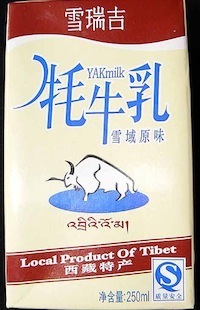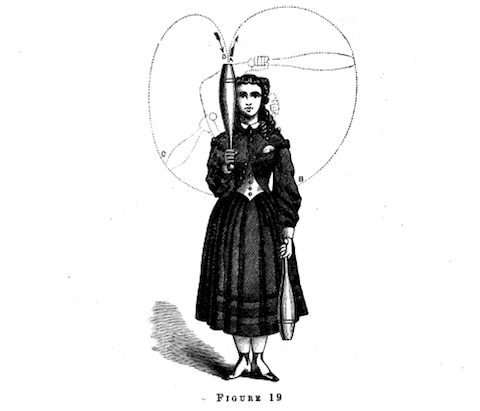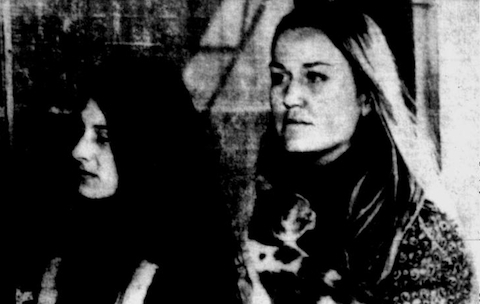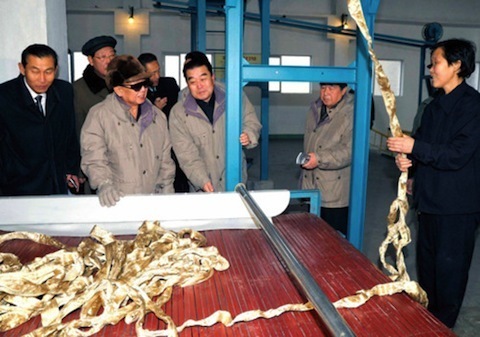Brendan I. Koerner's Blog, page 42
June 8, 2011
That Revelatory Moment

In studying various classic works of non-fiction, I've noticed that many do an excellent job of setting up a character's epiphany. This is no mean feat, as it is quite easy to make those sudden revelations come off as artificial. The key is to make us understand the logical trail that led someone to realize that up until the very moment described, their life was essentially a lie.
I'll be Microkhaning about lots of these great scenes of epiphany in the coming months, as I hack my way through my next book—a tale in which more than a few life-altering revelations must be handled in a delicate manner. I'm gonna start this occasional series by bringing up a great passage from Barbara Demick's Nothing to Envy, which I previously mentioned here. It also touches upon the ways in which we define our lives through the technological tools we employ, which gives Demick some nice bonus point for writerly skill:
Information in North Korea wasn't spread by books or newspapers or movies as much as it traveled by word of mouth. People who didn't have the means to watch foreign DVDs would hear about them from others. Unbelievable tales spread about the wealth and technological development of neighboring countries. It was said that South Koreans had developed a car so sophisticated that it would start only if the driver blew into a breathalyzer to prove he was sober (untrue), and that ordinary Chinese peasants living across the border were so rich they ate white rice three times a day (true).
A North Korean soldier would later recall a buddy who had been given an American-made nail clipper and was showing it off to his friends. The soldier clipped a few nails, admired the sharp, clean edges, and marveled at the mechanics of this simple item. Then he realized with a sinking heart: If North Korea couldn't make such a fine nail clipper, how could it compete with American weapons?
That soldier's epiphany is only related in Nothing to Envy because he later defected—a risky gambit he might never have taken had his pal not somehow obtained that 49-cent metal gadget we all take for granted. Suffice to say I will think of that scene every time I'm in line at CVS and see a bin of cut-rate nail clippers alongside the candy bars, penlights, and other impulse items.
June 7, 2011
Copywronged
The passing of Bangladeshi pop idol Azam Khan is notable not just because he was an all-around champ—a former guerrilla fighter turned platinum-selling artist—but also due to the fact that he exited this world with barely a taka to his name. In fact, Khan had to suspend his cancer treatments in Singapore because he couldn't foot the bill, despite having sold untold millions of albums during his long and distinguished career. Shortly before his death, Khan blamed his misery Bangladesh's lax intellectual-property laws:
"I've recorded 17 best-selling albums over my career but I have made less than 700,000 taka (10,000 dollars) in royalties," Khan told AFP from his sickbed in his modest two-bedroom house in the capital Dhaka.
"If I'd had this many hit albums in Europe, I'd own a private jet. In Bangladesh, rickshaw drivers will sometimes give me a free ride out of pity," he added.
The whole sad account of Khan's penury is worth reading, because it eloquently makes a point I've made here before: pirates often exist not because consumers are total craven, but rather because legitimate products are either incorrectly priced or too difficult to obtain. Merchants don't want to live in fear of having their inventories seized, or rely upon capricious underworld sources for their goods. They do so when there is no other viable option.
More Azam Khan music here. Not really my thing, but still several notches better than Nickelback.
June 6, 2011
Wishful Milking
 If you're the sort who follows the more bizarre tidbits to emerge from the world of agribusiness, you've probably noticed that there's been quite a stir about camel milk as of late. The United Arab Emirates, for one, has vowed to take advantage of relaxed European Union regulations regarding the import of the offbeat dairy product, which is alleged to offer a litany of health benefits.
If you're the sort who follows the more bizarre tidbits to emerge from the world of agribusiness, you've probably noticed that there's been quite a stir about camel milk as of late. The United Arab Emirates, for one, has vowed to take advantage of relaxed European Union regulations regarding the import of the offbeat dairy product, which is alleged to offer a litany of health benefits.
While the jury may be out on whether camel's milk is actually any gentler on the human body than the stuff tweaked out of Holsteins, it's clear that there is genuine consumer interest in such dairy alternatives. In fact, global milk drinkers are increasingly spending their hard-earned dollars on the output of animals that Old McDonald never deigned to own:
At an International Dairy Federation-organised symposium on non-cow milks in Athens this month, over 200 oral and poster presentations looked into the production and nutritional profile of dairy products that have never seen a cow.
Milks made from sheep, goat, yak, camel and buffalo were all put under the microscope as the industry looked to explore the nutritional and economic potential of these products. They have already grown in importance in the global dairy market. Back in 1961 non-cow milk represented 8.9 per cent of global milk production but now its share has risen to 16.7 per cent.
The underlying assumption here is that consumers have become more cognizant of the source of their dairy. But I always distrust narratives that pat folks on the back for becoming less gluttonous. I wonder if non-cow milks will once again slip into semi-obscurity as global trade barriers come down, thereby allowing products from dairy cows to be shipped to new markets. At the end of the day, dairy cows have an advantage over yaks and camels that will never go away: they produce a heckuva lot more milk. (A Holstein can squirt out about 23 times more milk per day than a yak.) In the long run, it's tough to imagine global consumers sticking with the non-cow milks they know when a nice glass of Nestle Quik can be had for a third of the price.
Related: Chinese milk production, 1980 to 2008. It's all about the cows over there.
(Image via Strange Taste Horsebeans)
June 3, 2011
Powerless

The last time we checked in on Papua New Guinea's efforts to counter its epidemic of sorcery-related killings, the country was considering making changes to its Sorcery Act of 1971 in order to make it easier for authorities to punish both witchcraft practitioners and those who murder them. Unfortunately, those legal reform efforts seem to be stalled, especially in light of the sudden death of respected parliamentary leader Joe Mek Teine, who was leading the anti-sorcery effort. As a result, the killings continue apace, to the point that the country's national police force has pronounced itself virtually powerless to stem the tide:
We are trying to counter that and basically the rule of law stands – you can't take someone else's life, regardless of whatever your grievances are. We're making that known. But we are spread thinly around the country. We can't be everywhere and in some instances, we are overpowered and actually some of these killings have happened right in front of our eyes. But we really can't do much.
As we noted in our earlier post on the topic, this is a really tricky issue. No one can legislate away centuries of belief, yet focusing solely on the murderous side effects of imaginary acts is obviously not doing the trick. So what can a central government do to discourage its citizens from believing in hocus-pocus?
I've been trying to think of an American analogue to PNG's situation, but it's tough. One situation that popped to mind, which has long been the foundation of one of my favorite legal dilemmas, is how states have handled cases involving faith healing. Juveniles have occasionally perished for want of simple antibiotics, because their parents' religions don't allow for any medical intervention besides prayer. Yet though some of these cases have resulted in manslaughter convictions, the government has never taken any action to discourage the opposition to medical science among the faithful.
My fear for PNG is that the belief in sorcery can only be stamped out through early education, which means waiting at least a generation for real change. But given the country's educational trends, that may be an optimistic projection.
June 1, 2011
Under Pressure
First time in forever that I have, quite literally, 27 hours to turn a C+ Wired story into an A-. Not sure I have what it takes, especially since this lede ain't even close to humming, but I owe the good folks in San Francisco my best shot. Back to y'all once the tale is safely in my editor's hands; 'til then, meditate upon Robert Diggs' first spin through the celebrity machine, before Wu-Tang was even a glimmer in his eye.
May 31, 2011
Alternate Reality Jazzercise

The exercise visionary Sim D. Kehoe believed that the swinging of Indian clubs could lead to utmost fitness. To his great credit, he recommended such workouts for properly attired ladies as well as men who dreamed of becoming the next Eugen Sandow. In fact, Kehoe had high hopes that Indian club training would help cultivate a certain sense of spirituality in previously idle women of the upper classes—hopes he made explicit in his classic tome The Indian Club Exercise with Explanatory Figures and Positions:
Half an hour with the Clubs daily, divided morning and evening, will soon do away with much that is artificial about womankind, and promote the natural development of a graceful form and movement.
A pity that Kehoe's vision didn't stick, especially since the United States might have racked up a few more Olympic medals had things turned out otherwise.
May 27, 2011
Wormholes

After much travel-related unpleasantness—most occurring by Gate F8 at the Philadelphia airport—I'm back in my beloved Atlah. Thanks so much for putting up with this week's sporadic posting; rest assured the absence will pay off down the line, as I managed to collect some dynamite research for my next book. Getting really excited about how this project is coming together, as well as a bit intimidated about how I'll work up the gumption to stop outlining and start writing the damn thing.
As is always the case, I stumbled across a thousand-and-one great tales in the margins of microfilm and the memories of friendly beer drinkers. One of my favorites is the story of Joann McDaniel, an Oregon girl who made the incredibly foolish mistake of trying to smuggle hashish from Syria to Turkey in the early 1970s. The Turks were, as you might surmise, not amused, and McDaniel and her friends received the Midnight Express treatment. Fortunately for her, the musician Bill Coleman wrote a hit song about the case ("Oregon"), and the continuing public attention eventually compelled the Turks to agree to a 1980 prisoner swap.
What fascinated me about the story is not the arc of the crime-and-incarceration narrative, but rather what happened after the credits had seemingly run. As Coleman recounts here, the seven years in Turkish prison made McDaniel feel like an alien upon her return to the U.S.:
She paid me a visit at my home in 1980 shortly after our initial meeting at the Hindquarter restaurant in Salem. She and Bob Hubbard spoke about maybe settling in Southern Oregon … purchasing a mobile home with the $10K they received from a publisher as an advance on a book they were to write about their experiences.
I saw nothing of the book, nor did I ever hear from JoAnn again. Frankly, it would not surpise me at all if they returned to Turkey, or somewhere in the middle east.
Their homecoming to America, after spending nine (seven by my count–ed.) years in a Turkish prison, was fraught with an extreme case of future shock and they didn't seem to be adjusting well to the "America" that had developed since their arrest…In that relatively short span of time the baby boomer generation had all gone from irresponsible "hippies" to family oriented "thirty somethings" ….. all, except for JoAnn and Bob. They still dressed and spoke like "hippies" … it was as if they has stepped out of a time capsule …. like lost children playing grown up, they wandered through that day with little or nothing in common with the America they had returned to.
They were, in all honesty, like ghosts from the past, and they felt very uncomfortable in this future world.
That discomfort after such a short absence speaks to a fundamental truth about the human condition: Even at relatively advanced ages, we are constantly growing and evolving more than we realize. When that growth is stunted, whether by prison or, say, life in a totalitarian nightmare, seeing how others have changed with the times must be disorienting, indeed.
Have a good Memorial Day Weekend, y'all. I'll be spending the bulk of mine revising a Wired story and packing for the new global headquarters. Oh, and maybe drinking my fair share of the ol' reliable, solely to blot out those painful memories of sleeping in the Philly airport as floor-waxing machines whirred loudly in the background.
U.S. Airways Has Made a Powerful Enemy
I'm writing this post a bit before 1 a.m. as I sit in the Philadelphia airport, awaiting a 6:45 a.m. flight home. I find myself in this predicament thanks to the horrid incompetence of U.S. Airways, which saw fit to cancel my connecting flight to LaGuardia after a five-hour delay. (The lackluster explanation given: "Maintenance.") By the time the hammer finally came down, the airline claimed that it could not secure us hotel rooms, nor give us any meal vouchers. And so here I am, watching the custodial crew wax the floors and seething with white-hot rage. I'm sure Microkhan Jr. will be similarly peeved when he awakes, as I had promised to take him to school tomorrow. Hope he understands that the blame here does not belong with his pops, but rather with Doug Parker and his inexplicably rude employees.
Needless to say, I think U.S. Airways and the fictional Air Makambo from the clip above have more than a bit in common. If only Hewa Bora Airways had a PHI-to-LGA route, I'd be all over that.
May 25, 2011
An Explanation for the Drabness

One of the small upsides of traveling is that it's given me time to catch up on the to-read queue—not much else to do in a small Oregon town after sundown, except devour information and good beer in equal measure. The first book to fall was Barbara Demick's Nothing to Envy, which is both brilliant and soul-crushingly sad. I exaggerate nothing when I say that one image in particular will always haunt me: That of a North Korean schoolteacher watching her favorite pupil slowly succumb to malnutrition during the 1990s famine, and realizing that nothing can be done to help the poor five-year-old.
Among the many things the book taught me about daily life in North Korea is the practical reason for much of the nation's notoriously drab palette. As it turns out, the majority of the Hermit Kingdom's clothing is made from Vinalon, a synthetic fiber made from coal and limestone, which was invented by a Korean in 1939. Because of its origins, Vinalon is considered politically correct by the Kim regime, and is thus the chief component in most North Korean uniforms. (The country's main Vinalon factory can be glimpsed here.) But as Demick notes, the material is not without its shortcomings:
New clothes were dispensed by your work unit or school, often on Kim Il-sung's birthday, reinforcing his image as the source of all good things. Everything was pretty much standard issue…The favored fabric was Vinalon, which didn't hold dye very well, so there was a limited palette drab indigo for factory workers uniforms, black or gray for office workers. Red was reserved for the scarves that children wore around their necks until the age of thirteen as part of their obligatory membership in the Young Pioneers.
I have to wonder about the long-term psychological effects of existing in a society where colorful clothing is basically a technological impossibility. It must sap the ability to feel joy in some way, much as the long, bleak winters of Scandinavia are known to cause depression (as well as some pretty great music). And a nation without joy and its attendant mental energy is that much easier to deceive and subjugate.
Full Vinalon backstory here. Unmentioned in that bit, though, is the speculation that Vinalon production has been used as a front for the manufacture of weapons of mass destruction.
May 23, 2011
Questing in Oregon
As noted late last week, I'll be on the road in Oregon for the next few days, gathering research for the next book. I'll try to post when possible, but apologies in advance for skipped days; gotta focus on the task at hand before I jet back to Atlah. For the moment, enjoy another artifact from my recent round of hammer-throw reporting—a 1984 Soviet documentary about the legendary Sergey Litvinov, the relatively diminutive master of the sport and one of the Eastern Bloc's athletic idols. His bitter rivalry with fellow Soviet champion Yuriy Sedykh was the Magic-vs.-Bird of mid-eighties hammer throw.




